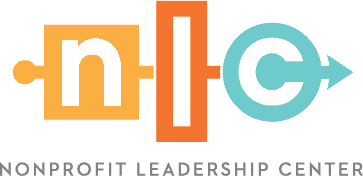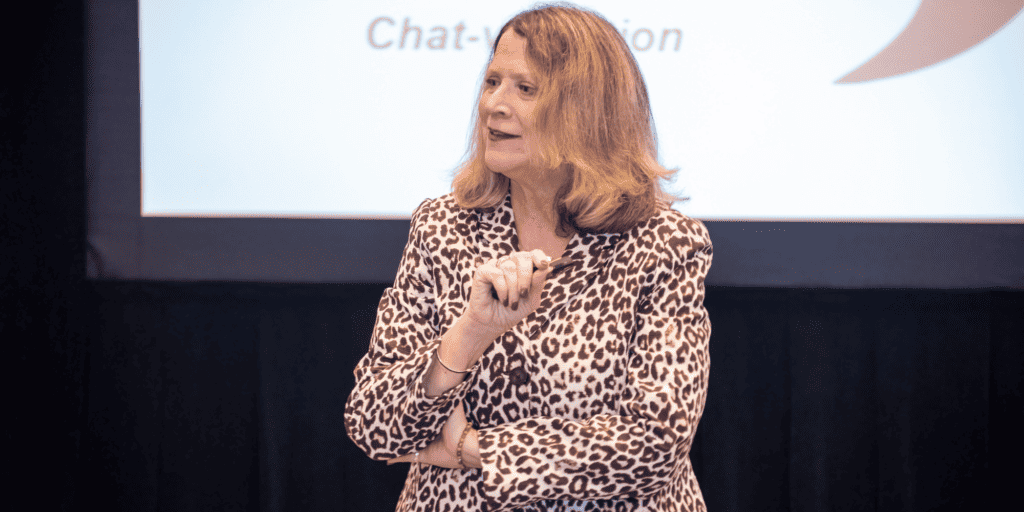Believe it or not, employees spend an average of 18+ hours per week in meetings, but nearly half say those meetings are unnecessary and 70% report multitasking during the gatherings (Source). With a reported 24 million hours wasted each year due to unproductive meetings, how do you conduct more productive meetings at your nonprofit that matter to your colleagues and motivate your team members?
Nonprofit Leadership Center Trainer and Founder of Innovative Team Solutions, Margarita Sarmiento, says the key to leading effective meetings is to be more intentional before, during and after each meeting. Use Margarita’s five top tips for conducting effective meetings at your nonprofit.
Before the Meeting: Prepare for a Good Meeting
1. Set the stage as a meeting leader.
Organizational culture is critical to the success of every nonprofit and its team members. While culture is hard to change quickly, you can meaningfully influence it by the climate you create at each meeting. Oftentimes, a meeting’s climate is set by those with the loudest personality or voice in the room. To establish an effective culture and climate for your next meeting before it even begins, be sure to:
- Send an email prior to the meeting with the meeting date, time and location. Send an effective meeting agenda (see below) and your expectations, if any, for each team member to come prepared with during the meeting. Share any ground rules that are essential for a positive and productive time together.
- Arrive first as the facilitator. Remember, as the meeting organizer, you are setting the example that this meeting matters and is worth the team's time and attention.
- Focus on good time management, being sure to adhere to the start and end time of the meeting to follow through as planned.
2. Be intentional about your meeting’s purpose and goals.
Having a clear purpose for every meeting is essential to reduce the number of unproductive meetings in your organization. To plan each meeting with intent, consider these three steps:
- First, ask yourself if a meeting is necessary. Could the topic or content be sent in an email? If an agenda is not needed, it shouldn’t be a meeting!
- Second, set expectations with a realistic and clear agenda that articulates the purpose of the meeting and desired meeting goals — what you must accomplish during your time together. For every item on the agenda, be sure to address who will do what and by when.
- Finally, invite the right people to your meeting. Does every team member need to be present or just a few specific people? How many meeting attendees are too many? Consider the pizza rule: You should be able to feed all meeting participants with two pizzas or less.
How many meeting attendees are too many? Consider the pizza rule: You should be able to feed all meeting participants with two pizzas or less.
Margarita Sarmiento Tweet
During the Meeting
3. Establish a parking lot to capture new and good ideas.
The greatest challenge of leading effective meetings is often keeping the discussion on track. The solution? Establish a parking lot. A parking lot’s role is to keep conversations on topic by capturing questions or good ideas on a whiteboard or with sticky notes to address at a future meeting or follow-up email. As the meeting facilitator, establishing a parking lot gives meeting attendees permission to move on without feeling like their idea or question will be lost if you move on to the next agenda item.
4. Create a safe space for team members to contribute.
An effective leader not only gives information but seeks it from others as well. To create trust and build strong relationships, create a safe space in your meetings that promote inclusivity by managing conduct and seeing to it that everyone has a voice at the table. If someone hasn’t yet spoken up or shared their perspective, invite them to contribute their opinion or questions. Model the behavior you expect to see from others.
Be sure to hold yourself and your team members accountable by circling back for feedback. Ask meeting attendees what they liked about the meeting, what worked well and what you could do differently next time to make it even better. Employee engagement in your meeting process will ensure fewer unproductive meetings and more meetings that matter to the whole team!
After the Meeting
5. Follow up with meeting minutes and clear next steps.
Sending all meeting attendees a recap of the meeting’s purpose, decisions made and action items agreed to is critical to ensure your well-run meeting has equally effective outcomes. As a general rule, anything put into your meeting minutes should be able to stand the test of time. Here are the minimum elements to include in your meeting minutes:
- Date and time of the meeting
- Names of all meeting participants
- Purpose of the meeting
- Agenda items and topics discussed
- Action items, assignments and timelines established
- Parking lot points and clear next steps to follow up on them
Now that you’ve got effective meeting strategies to lead more productive meetings at your nonprofit, go forth and start enjoying meetings that matter.
Explore Upcoming Classes to Boost Your Nonprofit’s Productivity
The Nonprofit Leadership Center hosts classes and certificate programs each month to help you and your nonprofit strengthen your organization and communities. See the upcoming classes from Margarita and all Nonprofit Leadership Center trainers to take your productivity, team and mission to new heights.


